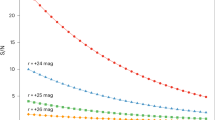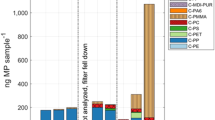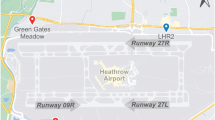Abstract
ON May 14, 1965, the Chinese exploded their second nuclear bomb (Hsinhua News Agency, May 14, 1965). Debris first appeared over Sweden in an upper-air sample on May 24, 1965, which was also the strongest sample we collected from this test. Soon after, debris particles were also found in ground air (some of them stronger and larger than the strongest upper-air-borne ones).
This is a preview of subscription content, access via your institution
Access options
Subscribe to this journal
Receive 51 print issues and online access
$199.00 per year
only $3.90 per issue
Buy this article
- Purchase on Springer Link
- Instant access to full article PDF
Prices may be subject to local taxes which are calculated during checkout
Similar content being viewed by others
References
Persson, G., Nature, 209, 1193 (1966).
Sisefsky, J., Nature, 206, 1140 (1965).
Sisefsky, J., Brit. J. App. Phys., 10, 526 (1959).
Sisefsky, J., F.O.A. 4 Rep., A, 4217 (1961).
Sisefsky, J., F.O.A. 4 Rep., A, 4407 (1964).
Sisefsky, J., Science, 133 735 (1961).
Sisefsky, J., F.O.A. 4 Rep. (to be published).
Ericsson, U. (personal communication).
Sisefsky, J., Nature, 203, 708 (1964).
Author information
Authors and Affiliations
Rights and permissions
About this article
Cite this article
SISEFSKY, J. Debris Particles from the Second Chinese Nuclear Bomb Test. Nature 210, 1143–1144 (1966). https://doi.org/10.1038/2101143a0
Issue Date:
DOI: https://doi.org/10.1038/2101143a0
Comments
By submitting a comment you agree to abide by our Terms and Community Guidelines. If you find something abusive or that does not comply with our terms or guidelines please flag it as inappropriate.



